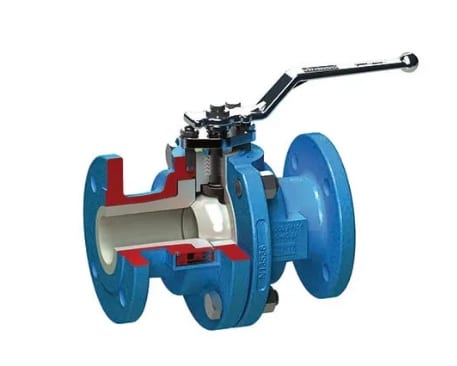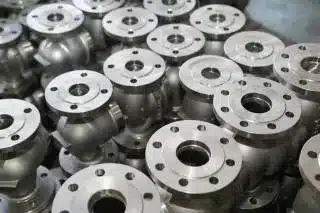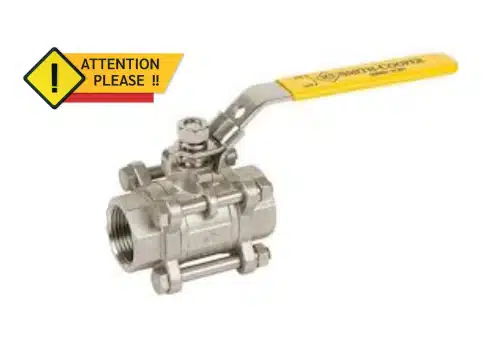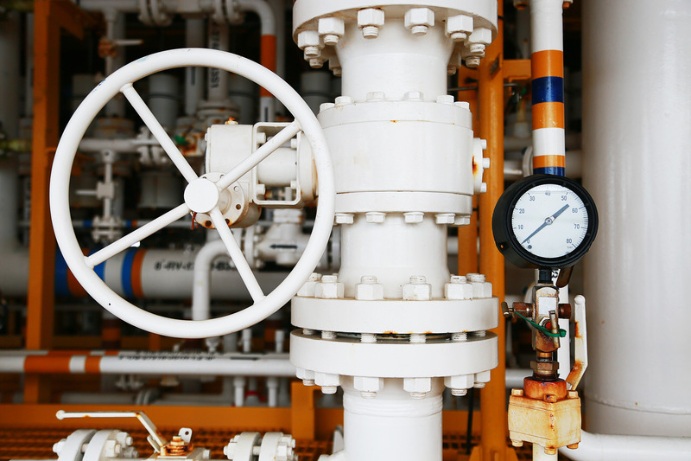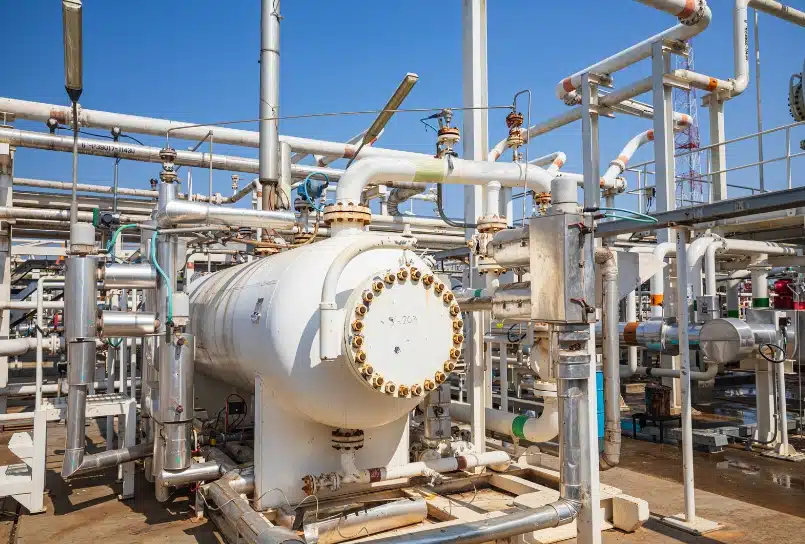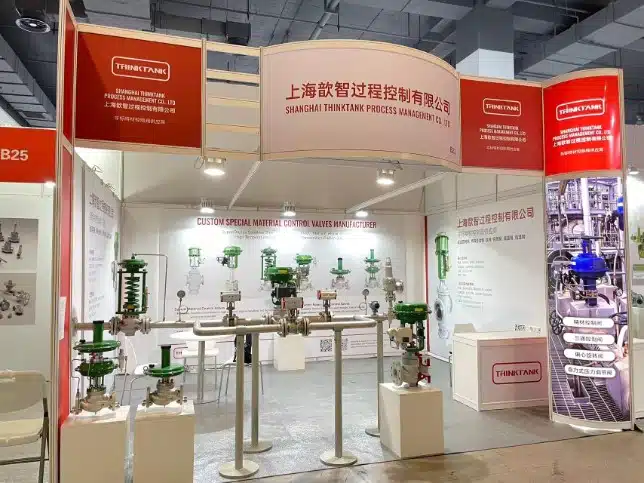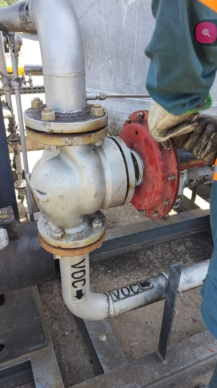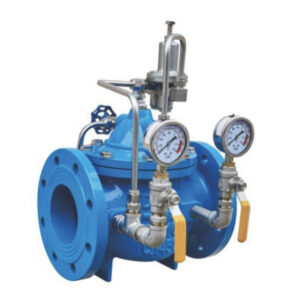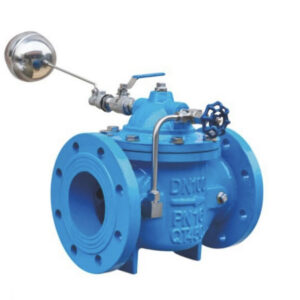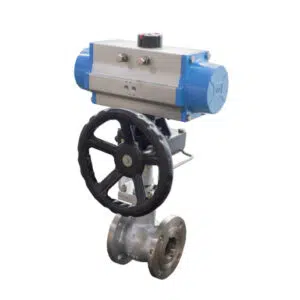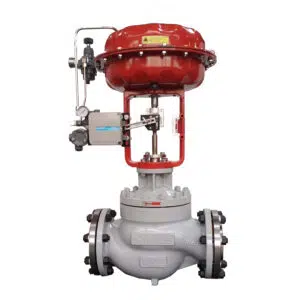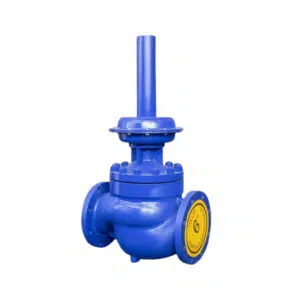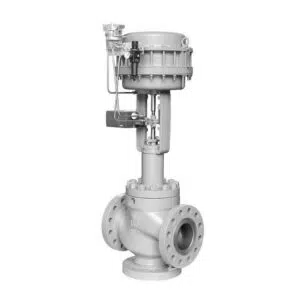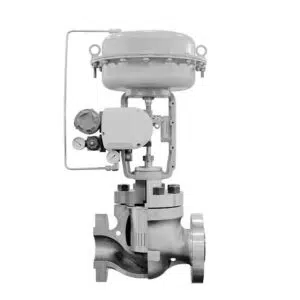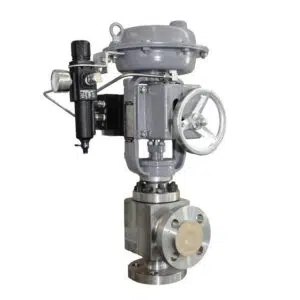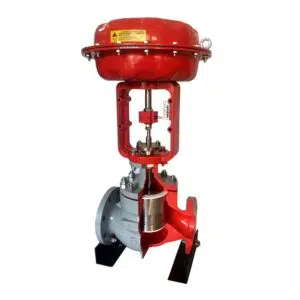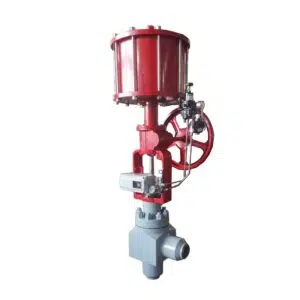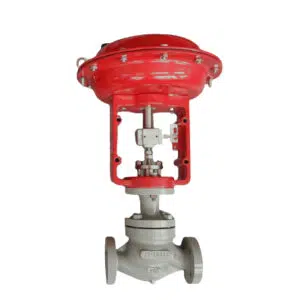The practice of using a magnet to test the quality and authenticity of stainless steel valves is a one-sided and impractical method of judgment.
There are various types of stainless steel, classified by their structure at room temperature, such as martensitic stainless steel, austenitic stainless steel, ferritic, and duplex stainless steel. Austenitic stainless steel exhibits no or weak magnetism, whereas other stainless steel alloys are strongly magnetic.
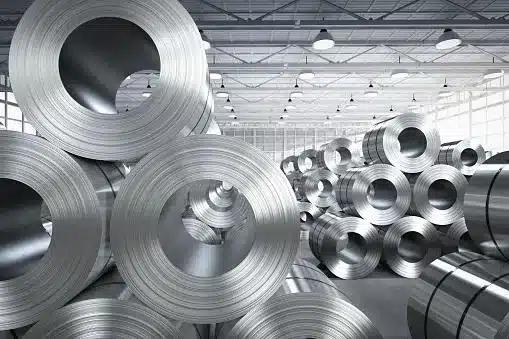
What are Austenitic Stainless Steels
Austenitic stainless steels are a category of stainless steels characterized by their austenite crystal structure at room temperature. This group of steels includes types 302, 304, 316, and others. The austenitic structure is achieved through the addition of elements like nickel, manganese, and nitrogen that stabilize the austenite phase at room temperature.
Austenitic stainless steels are known for their excellent corrosion resistance, formability, and weldability. These properties make them a popular choice for a wide range of applications, from kitchen utensils to chemical processing equipment, and from architectural applications to components in the automotive industry.
The primary elements in austenitic stainless steels are iron, chromium, and nickel. The high nickel and chromium contents enable this type of steel to resist a wide range of corrosive environments and makes it the most stainless of the stainless steels. They also often contain additional alloying elements, such as manganese and molybdenum, to further enhance specific properties.
A key feature of austenitic stainless steel is that it is non-magnetic in its solution annealed condition. However, it can become slightly magnetic when cold-worked.
Why do Austenitic Stainless Steels with Magnetism
CF8 (304), CF8M (316), CF3 (304L), CF3M (316L), and others all belong to austenitic stainless steel and are either non-magnetic or weakly magnetic. However, during smelting, a small amount of martensitic or ferritic structure may recombine in the austenite, unevenly distributed, as little as 5% or as much as 40%. If these proportions increase, the casting will exhibit magnetism. In general, castings with a higher content of ferrite will have better strength.
| Alloy | ASTM Standard | UNS Standard | Carbon (C) | Manganese (Mn) | Silicon (Si) | Chromium (Cr) | Nickel (Ni) | Molybdenum (Mo) |
| CF8 (304) | A351 | J92600 | ≤0.08% | ≤2.00% | ≤2.00% | 18.0–21.0% | 8.0–11.0% | ≤0.75% |
| CF8M (316) | A351 | J92900 | ≤0.08% | ≤2.00% | ≤2.00% | 18.0–21.0% | 9.0–12.0% | 2.0–3.0% |
| CF3 (304L) | A351 | J92500 | ≤0.03% | ≤2.00% | ≤2.00% | 18.0–21.0% | 8.0–12.0% | ≤0.75% |
| CF3M (316L) | A351 | J92800 | ≤0.03% | ≤2.00% | ≤2.00% | 18.0–21.0% | 10.0–15.0% | 2.0–3.0% |
| ASTM(American) | EN(European) | JIS(Japanese) | GB(National/China) | DIN(German) |
|---|---|---|---|---|
| 304/CF8 | S30400 | 1.4301 | SUS304 | 06Cr19Ni10 |
| 316/CF8M | S31600 | 1.4401 | SUS316 | 06Cr17Ni12Mo2 |
| 304L/CF3 | S30403 | 1.4307 | SUS304L | 022Cr19Ni10 |
| 316L/CF3M | S31603 | 1.4404 | SUS316L | 022Cr17Ni12Mo2 |
Currently, there is no process either domestically or internationally that achieves 100% austenite. During the solution treatment of austenitic stainless steel castings, only carbides are dissolved into the austenite, enhancing the casting’s corrosion resistance. It is impossible to change the content of martensite or ferrite, merely changing the structure slightly, which doesn’t significantly reduce magnetism.
The raw casting will also exhibit slight magnetism during cold processing. The key to reducing magnetism in stainless steel materials such as CF8 (304), CF8M (316), CF3 (304L), CF3M (316L), and others is to control the content of martensite or ferrite. The lower the content, the weaker the magnetism, or the aim could be to fracture their structure and distribute them evenly.
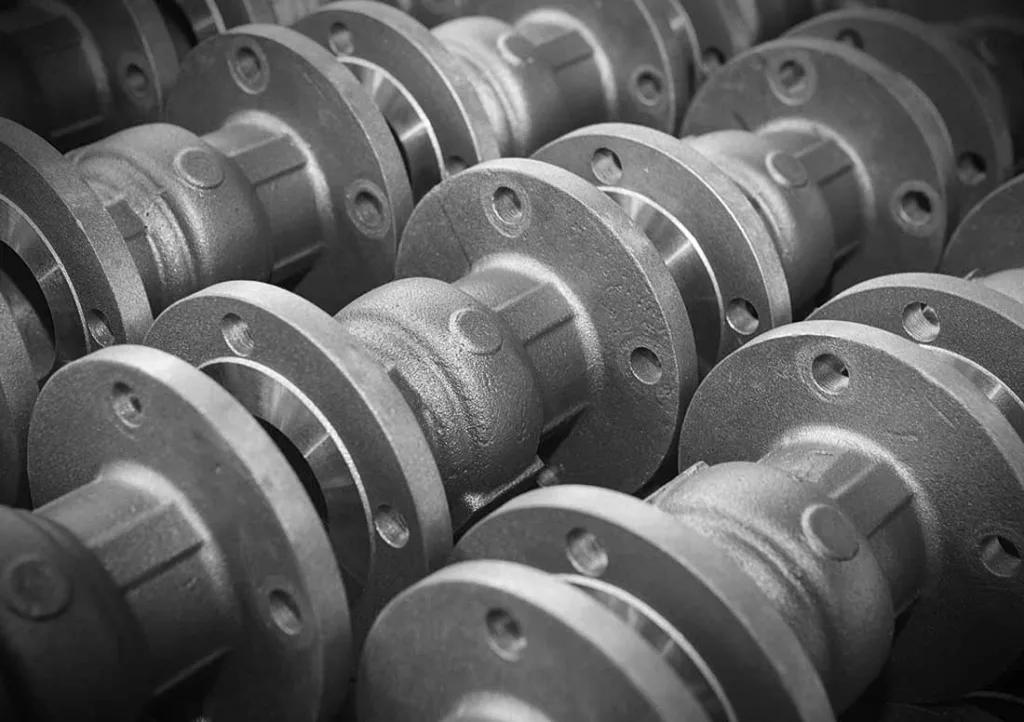
ASTM A351 stainless steel valves, chemical composition
| ASTM A351 GRADE | UNS | C | Mn | Si | S | P | Cr | Ni | Mo | Nb | V | N | Cu |
| CF3+CF3A | J9270 | 0.03 | 1.5 | 2 | 0.04 | 0.04 | 17.0-21.0 | 8.0-11.0 | 0.5 | – | – | – | – |
| CF8+CF8A | J9260 | 0.08 | 1.5 | 2 | 0.04 | 0.04 | 18.0-21.0 | 8.0-11.0 | 0.5 | – | – | – | – |
| CF3M+CF3MA | J9280 | 0.03 | 1.5 | 1.5 | 0.04 | 0.04 | 17.0-21.0 | 9.0-13.0 | 2.0-3.0 | – | – | – | – |
| CF8M | J9290 | 0.08 | 1.5 | 1.5 | 0.04 | 0.04 | 18.0-21.0 | 9.0-12.0 | 2.0-3.0 | – | – | – | – |
| CF3MN | J92804 | 0.03 | 1.5 | 1.5 | 0.04 | 0.04 | 17.0-21.0 | 9.0-13.0 | 2.0-3.0 | – | – | 0.10-0.20 | – |
| CF8C | J92710 | 0.08 | 1.5 | 2 | 0.04 | 0.04 | 18.0-21.0 | 9.0-12.0 | 0.5 | -1 | – | – | – |
| CF10 | J92950 | 0.04-0.10 | 1.5 | 2 | 0.04 | 0.04 | 18.0-21.0 | 8.0-11.0 | 0.5 | – | – | – | – |
| CF10M | J92901 | 0.04-0.10 | 1.5 | 1.5 | 0.04 | 0.04 | 18.0-21.0 | 9.0-12.0 | 2.0-3.0 | – | – | – | – |
| CH8 | J9340 | 0.08 | 1.5 | 1.5 | 0.04 | 0.04 | 22.0-26.0 | 12.-15.0 | 0.5 | – | – | – | – |
| CH10 | J93401 | 0.04-0.10 | 1.5 | 2 | 0.04 | 0.04 | 22.0-26.0 | 12.-15.0 | 0.5 | – | – | – | – |
| CH20 | J93402 | 0.04-0.20 | 1.5 | 2 | 0.04 | 0.04 | 22.0-26.0 | 12.0-15.0 | 0.5 | – | – | – | – |
| CK20 | J94202 | 0.04-0.20 | 1.5 | 1.75 | 0.04 | 0.04 | 23.0-27.0 | 19.0-22.0 | 0.5 | – | – | – | – |
| HK30 | J94203 | 0.25-0.35 | 1.5 | 1.75 | 0.04 | 0.04 | 23.0-27.0 | 19.0-22.0 | 0.5 | – | – | – | – |
| HK40 | J94204 | 0.35-0.45 | 1.5 | 1.75 | 0.04 | 0.04 | 23.0-27.0 | 19.0-22.0 | 0.5 | – | – | – | – |
| HT30 | N08030 | 0.25-0.35 | 2 | 2.5 | 0.04 | 0.04 | 13.0-17.0 | 33.0-37.0 | 0.5 | – | – | – | – |
| CF10MC | – | 0.1 | 1.5 | 1.5 | 0.04 | 0.04 | 15.0-18.0 | 13.0-16.0 | 1.7-2.25 | -2 | – | – | |
| CN7M | N0807 | 0.07 | 1.5 | 1.5 | 0.04 | 0.04 | 19.0-22.0 | 27.5-30.5 | 2.0-3.0 | – | – | – | 3.0-4.0 |
| CN3MN | J94651 | 0.03 | 2 | 1 | 0.01 | 0.04 | 20.0-22.0 | 23.5-25.5 | 6.0-.0 | – | – | 0.18-.26 | 0.75 |
| CE8MN | – | 0.08 | 1 | 1.5 | 0.04 | 0.04 | 22.5-25.5 | 8.0-11.0 | 3.0-.5 | – | – | 0.10-.30 | – |
| CG-6MMN | J93790 | 0.06 | 4.0-6.0 | 1 | 0.03 | 0.04 | 20.5-23.5 | 11.5-13.5 | 1.50-3.0 | 0.10-.30 | 0.10-.30 | 0.20-.40 | – |
| CG8M | J9300 | 0.08 | 1.5 | 1.5 | 0.04 | 0.04 | 18.0-21.0 | 9.0-13.0 | 3.0-4.0 | – | – | – | – |
| CF10SMnN | J92972 | 0.1 | 7.0-9.0 | 3.50-.50 | 0.03 | 0.06 | 16.0-18.0 | 8.0-9.0 | – | – | – | 0.08-.18 | – |
| CT15C | N08151 | 0.05-0.15 | 0.15-.50 | 0.50-.50 | 0.03 | 0.03 | 19.0-21.0 | 31.0-.0 | – | 0.50-.50 | – | – | – |
| CK-3MCuN | J93254 | 0.025 | 1.2 | 1 | 0.01 | 0.045 | 19.5-20.5 | 17.5-19.5 | 6.0-7.0 | – | – | 0.18-.24 | 0.50-1.0 |
| CE20N | J92802 | 0.2 | 1.5 | 1.5 | 0.04 | 0.04 | 23.0-26.0 | 8.0-.0 | 0.5 | – | – | 0.08-.20 | – |
| CG3M | J92999 | 0.03 | 1.5 | 1.5 | 0.04 | 0.04 | 18.0-21.0 | 9.0-.0 | 3.0-4.0 | – | – | – | – |
Tubes and plates are produced from steel blanks through many rounds of heating, extruding, and cooling. This process disrupts the structure of the martensite and ferrite, distributing them very evenly. Therefore, the magnetism of tubes and plates is minimal or undetectable.
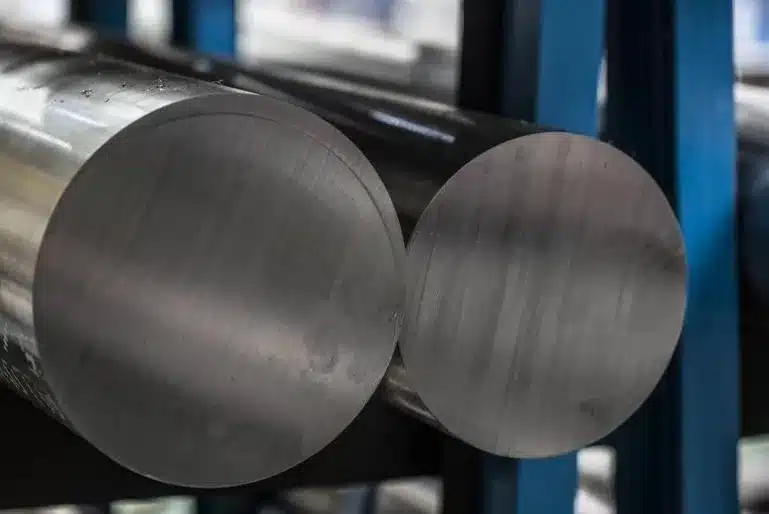
Mechanical Properties Table of Cast Steel Valves
| ASTM CAST GRADE | Tensile strength(psi) | Yield strength(psi min) | Elongation(at 2 inches) | Reduction of Area (%) | – | – |
| – | Minimum Steel Mechanical Properties | – | Modulus | Approximate | ||
| ASTM A216 Grade WCB | 70,000 | 36,000 | 22 | 35 | 27.9 | 137-187 |
| ASTM A352 Grade LCB | 65,000 | 35,000 | 24 | 35 | 27.9 | 137-187 |
| ASTM A217 Grade C5 | 90,000 | 60,000 | 18 | 35 | 27.4 | 241 Max. |
| ASTM A217 Grade WC1 | 65,000 | 35,000 | 24 | 35 | 29.9 | 215 Max. |
| ASTM A217 Grade WC6 | 70,000 | 40,000 | 20 | 35 | 29.9 | 215 Max. |
| ASTM A217 Grade WC9 | 70,000 | 40,000 | 20 | 35 | 29.9 | 241 Max. |
| ASTM A352 Grade LC3 | 65,000 | 40,000 | 24 | 35 | 27.9 | 137 |
| ASTM A217 Grade C12 | 90,000 | 60,000 | 18 | 35 | 27.4 | 180-240 |
| ASTM A351 Grade CF-8 | 65,000 | 28,000 | 35 | – | 28 | 140 |
| ASTM A351 Grade CF-8M | 70,000 | 30,000 | 30 | – | 28.3 | 156-170 |
| ASTM A126 Class B | 31,000 | – | – | – | – | 160-220 |
| ASTM A126 Class C | 41,000 | – | – | – | – | 160-220 |
| ASTM A395 Type 60-45-15 | 60,000 | 45,000 | 15 | – | 23-26 | 143-207 |
| ASTM A439 Type D-2B | 58,000 | 30,000 | 7 | – | – | 148-211 |
| ASTM B62 | 30,000 | 14,000 | 20 | 17 | 13.5 | 55-65* |
| ASTM B143 Alloy 1A | 40,000 | 18,000 | 20 | 20 | 15 | 75-85* |
| ASTM B147 Alloy 8A | 65,000 | 25,000 | 20 | 20 | 15.4 | 98* |
| ASTM B148 Alloy 9C | 75,000 | 30,000 | 12 min. | 12 | 17 | 150 |
| (Weldable Grade) | 65,000 | 32,500 | 25 | – | 23 | 120-170 |
| ASTM A494 (Hastelloy B) | 72,000 | 46,000 | 6 | – | – | – |
| ASTM A494 (Hastelloy C) | 72,000 | 46,000 | 4 | – | – | – |
| Stellite No. 6 | 121,000 | 64,000 | 01.feb | – | 30.4 | – |
| ASTM B211 Alloy 20911-T3 | 44,000 | 36,000 | 15 | – | 10.2 | 95 |
| ASTM B16 1/2 Hard | 45,000 | 15,000 | 7 | 50 | 14 | – |
| ASTM B21 Alloy 464 | 60,000 | 27,000 | 22 | 55 | – | – |
| AISI 12L 14 | 79,000 | 71,000 | 16 | 52 | – | 163 |
| ASTM A108 Grade 1018 | 69,000 | 48,000 | 38 | 62 | – | 143 |
| (Suitable for ASTM A193 Grade B7 bolt material) | 135,000 | 115,000 | 22 | 63 | 29.9 | 255 |
| ASTM A276 Type 302 | 85,000 | 35,000 | 60 | 70 | 28 | 150 |
| ASTM A276 Type 304 | 85,000 | 35,000 | 60 | 70 | – | 149 |
| ASTM A276 Type 316 | 80,000 | 30,000 | 60 | 70 | 28 | 149 |
| ASTM A276 Type 316L | 81,000 | 34,000 | 55 | – | – | 146 |
| ASTM A276 Type 410 | 75,000 | 40,000 | 35 | 70 | 29 | 155 |
| ASTM A461 Grade 630 | 135,000 | 105,000 | 16 | 50 | 29 | 275-345 |
| Alloy K500 (K Monel) | 100,000 | 70,000 | 35 | – | 26 | 175-260 |
| ASTM B335 (Hastelloy B) | 100,000 | 46,000 | 30 | – | – | – |
| ASTM B336 (Hastelloy C) | 100,000 | 46,000 | 20 | – | – | – |
Neither domestic nor international standards typically include magnetism testing for austenitic stainless steel. It is not a standard for determining the quality of stainless steel. It should be emphasized that the magnetism of austenitic stainless steel, caused by various factors, is not at the same level as that of other stainless steel materials or carbon steel. In other words, the magnetism of austenitic stainless steel is always weak.
Recommended Applications (Casting Valve Materials)
| Materials Group | Material Grade | RECOMMENDED SERVICE |
| High-temperature Carbon Steel | ASTM A216 Grade WCB | Non-corrosive fluids such as water, oil, and gases at temperatures range -20°F (-30°C) and +1100°F (+593°C). |
| Low-temperature Carbon Steel | Non-corrosive fluids such as water, oil, and gases at temperatures range -20°F (-30°C) and +800°F (+425°C) | Low temperature to -50°F (-46°C). Use excluded above +650°F (+340°C). |
| Low-temperature Carbon Steel | ASTM A352 Grade LC1 | Low temperature to -75°F (-59°C). Use excluded above +650°F (+340°C). |
| Low-temperature Carbon Steel | ASTM A352 Grade LC2 | Low temperature to -100°F (-73°C). Use excluded above +650°F (+340°C). |
| 3.1/2% Nickel Steel | ASTM A352 Grade LC3 | Low temperature to -150°F (-101°C). Use excluded above +650°F (+340°C). |
| 1.1/4% Chrome 1/2% Moly Steel | ASTM A217 Grade WC6 | Non-corrosive fluids such as water, oil&gases at temperatures range -20°F (-30°C) and +1100°F (+593°C). |
| 2.1/4% Chrome | ASTM A217 Grade C9 | Non-corrosive fluids such as water, oil&gases at temperatures range -20°F (-30°C) and +1100°F (+593°C). |
| 5% Chrome 1/2% Moly | ASTM A217 Grade C5 | Mild corrosive or erosive applications and non-corrosive applications at temperatures between -20°F (-30°C) and +1200°F (+649°C). |
| 9%Chrome | ASTM A217 Grade C12 | Mild corrosive or erosive applications and non-corrosive applications at temperatures between -20°F (-30°C) and +1200°F (+649°C). |
| 1% Moly | ||
| 12% Chrome Steel | ASTM A487 Grade CA6NM | Corrosive application at temperatures between -20°F (-30°C) and +900°F (+482°C). |
| 12% Chrome | ASTM A217 Grade CA15 | Corrosive application at temperatures up to +1300°F (+704°C) |
| Stainless steel 316 | ASTM A351 Grade CF8M | Corrosive or either extremely low or high-temperature non-corrosive services between -450°F (-268°C) and +1200°F (+649°C). Above +800°F (+425°C) specify carbon content of 0.04% or greater. |
| Stainless steel 347 | ASTM 351 Grade CF8C | Mainly for high temperature, corrosive applications between -450°F (-268°C) and +1200°F (+649°C). Above +1000°F (+540°C) specify carbon content of 0.04% or greater. |
| Stainless steel 304 | ASTM A351 Grade CF8 | Corrosive or extremely high temperatures non-corrosive services between -450°F (-268°C) and +1200°F (+649°C). Above +800°F (+425°C) specify carbon content of 0.04% or greater. |
| Stainless steel 304L | ASTM A351 Grade CF3 | Corrosive or non-corrosive services to +800F (+425°C). |
| Stainless steel 316L | ASTM A351 Grade CF3M | Corrosive or non-corrosive services to +800F (+425°C). |
| Alloy-20 | ASTM A351 Grade CN7M | Good resistance to hot sulfuric acid to +800F (+425°C). |
| Monel | ASTM 743 Grade M3-35-1 | Weldable grade. Good resistance to corrosion by all common organic acids and salt water. Also highly resistant to most alkaline solutions to +750°F (+400°C). |
| Hastelloy B | ASTM A743 Grade N-12M | Well suited for handling hydrofluoric acid at all concentrations and temperatures. Good resistance to sulphuric and phosphoric acids to +1200°F (+649°C). |
| Hastelloy C | ASTM A743 Grade CW-12M | Good resistance to span oxidation conditions. Good properties at high temperatures. Good resistance to sulphuric and phosphoric acids to +1200°F (+649°C). |
| Inconel | ASTM A743 Grade CY-40 | Very good for high-temperature service. Good resistance to spangly corrosive media and atmosphere to +800°F (+425°C). |
| Bronze | ASTM B62 | Water, oil&gas: up to 400°F. Excellent for brine and seawater service. |
Why Austenitic Stainless Steels Used for Industrial Valves
Austenitic stainless steel is commonly used in the manufacturing of a variety of industrial valves due to its excellent mechanical properties, corrosion resistance, and versatility. Here are some types of industrial valves typically made of austenitic stainless steel and their common applications:
Ball Valves
Made from austenitic stainless steel for its durability and corrosion resistance. They are often used in applications where a tight shut-off is required, such as in oil and gas production, petrochemicals, and certain high-pressure industrial applications.
Austenitic Stainless Steel Gate Valves
These are often made from austenitic stainless steel when they need to be resistant to corrosive environments. Gate valves are primarily used in wastewater and other abrasive fluid applications.
Globe Valves
Made from austenitic stainless steel when high resistance to flow is needed and corrosive conditions are present. These valves are often used in throttling applications, particularly in the food and beverage industry, the chemical industry, and steam systems.
Check Valves
Austenitic stainless steel is used to check valves in systems where backflow prevention is needed in a corrosive environment. They are commonly used in water systems, chemical processing, and marine applications.
Butterfly Valves
Often made from austenitic stainless steel for systems requiring the regulation of large flow rates in a limited space, and where high corrosion resistance is needed. They’re frequently found in water supply systems, food and beverage, and chemical processing industries.
Plug Valves
Made from austenitic stainless steel when there is a need for minimal fluid trapping in corrosive applications. They’re often used in the oil and gas industry.
Diaphragm Valves
These are often made of austenitic stainless steel and are used in applications requiring a sterile environment, such as pharmaceuticals, food and beverage, and biotechnological industries.
The main reason to use austenitic stainless steel in these valves is the material’s excellent corrosion resistance, good formability, and high-temperature performance. These properties make austenitic stainless steel a good choice for valves used in demanding environments like chemical processing plants, oil and gas refineries, power generation facilities, and numerous other industries.
THINKTANK is a professional manufacturer of austenitic stainless steel valves and alloy stainless steel valves. If you have any questions, feel free to inquire at any time.



